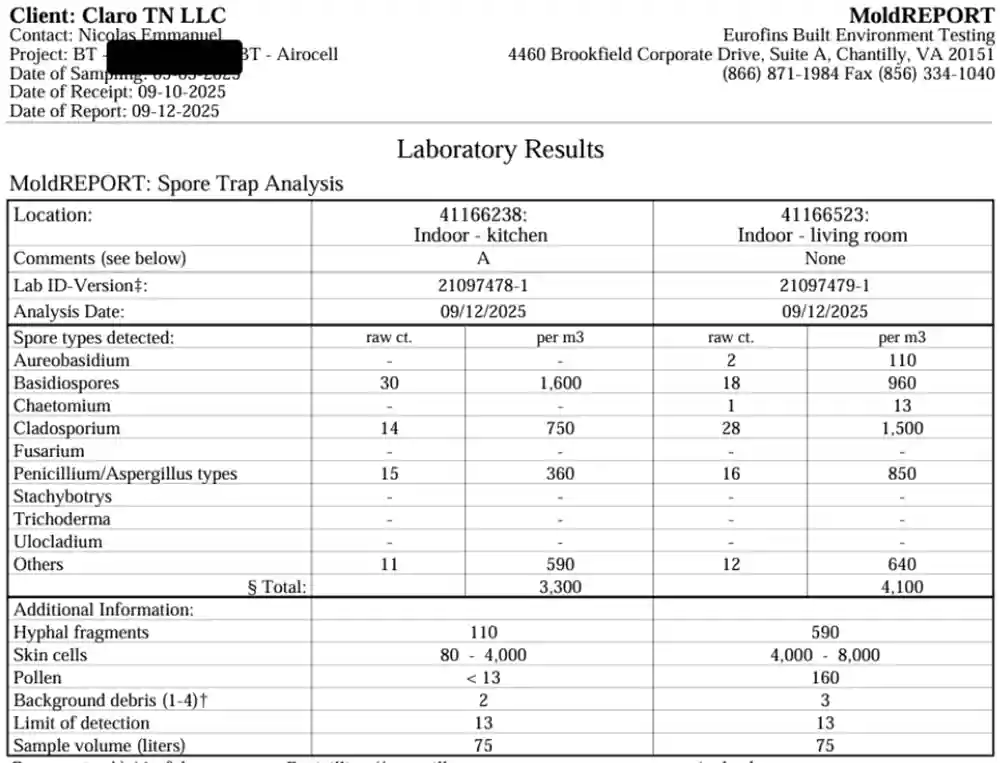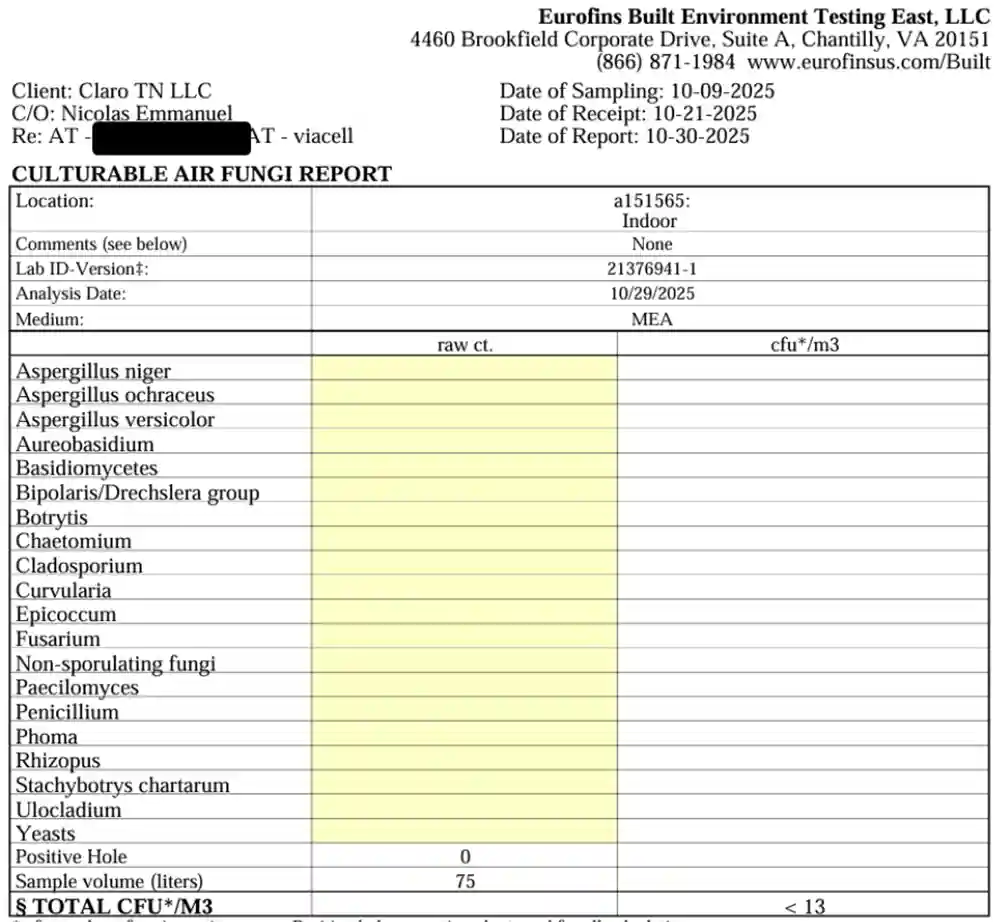Case Study: HVAC mold spreads to kitchen and living areas
A Franklin homeowner called Claro after an HVAC service revealed mold contamination in her system. She wanted to address the problem quickly, but needed to understand the full scope before committing to treatment.
Claro's team assessed the 2,020-square-foot home and found elevated mold levels concentrated in the kitchen and living room—the areas most affected by air circulation from the contaminated HVAC system.

Initial testing confirmed the homeowner's concerns. The kitchen showed total mold levels at 3,300 spores per cubic meter, while the living room measured 4,100 spores per cubic meter. Both areas had elevated Cladosporium and Penicillium/Aspergillus—common indicators of HVAC-related contamination.
The recommendation was clear: clean and service the HVAC system first, then perform a whole-home treatment to address the spores that had already spread throughout the living spaces. A detailed quote was provided, and once approved, treatment was scheduled.

Claro performed a comprehensive HVAC cleaning and servicing, followed by a whole-home dry fog treatment. The EPA-certified process eliminated mold in the HVAC system and neutralized airborne spores throughout the home.
Post-treatment testing showed dramatic results: mold levels dropped to less than 13 CFU/m³—essentially undetectable. The kitchen and living room, which had shown the highest contamination, were now restored to safe, normal air quality levels.
This case demonstrates the importance of addressing HVAC contamination properly. Clean the source, treat the spread, and verify the results with testing. That's how you ensure the problem is truly solved.

